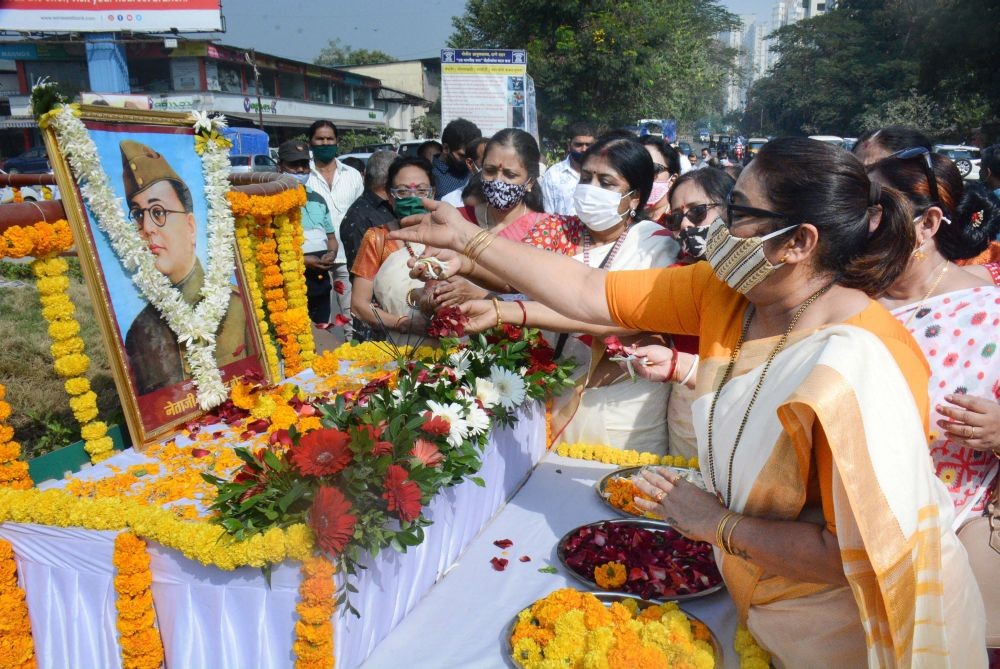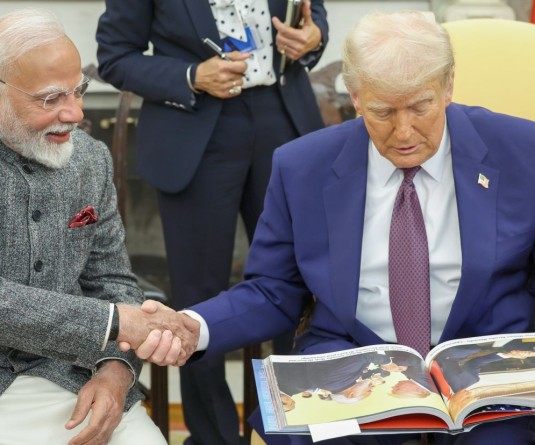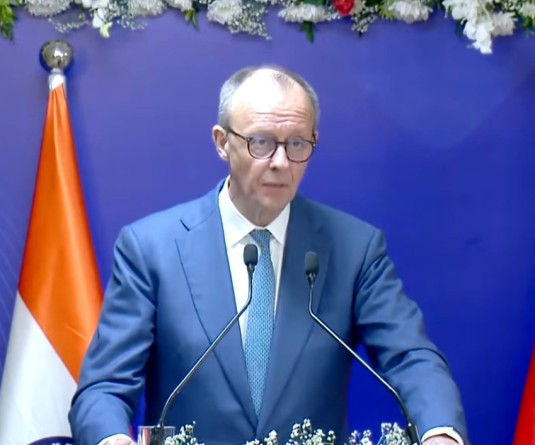Thane: Members of Bengali community pay tribute to Netaji Subhas Chandra Bose on his birth anniversary, in Thane, Saturday, Jan. 23, 2021. (PTI Photo)

New delhi, January 23 (PTI): Hundred secret files, which could throw some light on the controversy over the disappearance or death Subhas Chandra Bose, were made public by Prime Minister Narendra Modi on Netaji’s 119th birth anniversary on Saturday.
The 100 files comprise over 16,600 pages of historic documents, ranging from those of the British Raj to as late as 2007, an official said, after the ceremony at the National Archives of India in which the prime minister declassified the secret papers.
Also present at the ceremony were members of the Bose family and Union Ministers Mahesh Sharma and Babul Supriyo when the files were thrown open for public view.
In addition to the 100 files, the NAI plans to release digital copies of a set of 25 declassified files on Bose in the public domain every month. NAI also opened a dedicated website to store all the declassified files related to Bose.
Modi and his ministerial colleagues went around glancing at the declassified files, spending over half an hour at the National Archives. He also spoke to the members of the Bose family.
The move came after Modi met the family members of Netaji in October last year and announced that the government would declassify the files relating to the leader whose disappearance 70 years ago remains a mystery.
While two commissions of inquiry had concluded that Netaji had died in a plane crash in Taipei on August 18, 1945, a third probe panel, headed by Justice M K Mukherjee, had contested it and suggested that Bose was alive after that. The controversy has also split members of the Bose family.
The first lot of 33 files were declassified by the Prime Minister’s Office and handed over to the NAI on December 4 last year.
Subsequently, the ministries of home affairs and external affairs too initiated the process of declassification of files relating to Bose in their respective collection which were then transferred over to the NAI.
Chandra Kumar Bose, spokesperson of the Bose family and grand-nephew of Subhas Chandra Bose who was present at the ceremony, said “we welcome this step by the prime minister wholeheartedly. This is a day of transparency in India.”
However, he also said, “We feel that certain very important files were destroyed during the Congress regime in order to hide the truth. We have documentary evidence to understand this. So we feel that the Indian government should take steps to ensure the release of files lying in Russia, Germany, UK, USA.”
He said from whatever documents “we could go through, there are only circumstantial evidence of the air crash but no conclusive evidence of the air crash.”
“Even in one of the letters that we saw here which was written by Lal Bahadur Shastri to Suresh Bose that there is no conclusive evidence about the air crash, only few circumstantial evidence,” Chandra Bose said.
Netaji’s nephew Ardhendu Bose, who also attended the ceremony, said, “The Bose family and the entire country has been waiting for this moment for the last seven decades. We feel these files would be able to throw some light on it.”
Declassification of the 100 files by the central government came four months after West Bengal government had released 64 secret Netaji files kept in its police and state government lockers.
Besides the controversy over whether Subhash Bose died in the 1945 air crash at Taihoku in Taipei or not, those who believe he was alive after that have different theories about what happened to the leader thereafter.
While one of the theories says Bose fled to the former Soviet Union to continue to fight for India’s independence but was later killed there, another says that Netaji returned to India as an ascetic, named ‘Gumnami Baba, and continued to live in Uttar Pradesh’s Faizabad till 1985.
Netaji’s daughter Anita Bose Pfaff, who lives in Germany, believes that her father had died in the Taipei plane crash.
However, Chandra Bose, who was close to Netaji’s wife Emilie Schenkl, says in a Facebook post that she, “Never believed in the false theory of the air crash. She was told by a Russian journalist that Netaji was very much alive in the erstwhile Soviet Union after 1945. Emilie Schenkl -- till she passed away in March 1996, believed Netaji did not die in any air crash. The nation is eagerly waiting to know the truth.”
The papers declassified onSaturday contain 36 files of Prime Minister’s office, 18 files of ministry of home affairs and 46 files from ministry of external affairs covering the period 1956 to 2013.
An official said the National Archives placed 100 files relating to Bose in public domain “after preliminary conservation treatment and digitisation”.
These files, papers are also available in the e-kiosks, flipbook and tablets for the public to go through till February 15 at the National Archives, he said.
The secret files being made public meets a “long-standing public demand” which would facilitate scholars to carry out further research on Bose, the official said.
In 1997, the National Archives had received 990 declassified files pertaining to the Indian National Army (Azad Hind Fauj) from the ministry of defence.
In 2012, 1,030 files and items pertaining to the Khosla Commission and Justice Mukherjee Commission were received from the ministry of home affairs.
All these files and items are already open to the public under the Public Records Rules, 1997, the official added.






